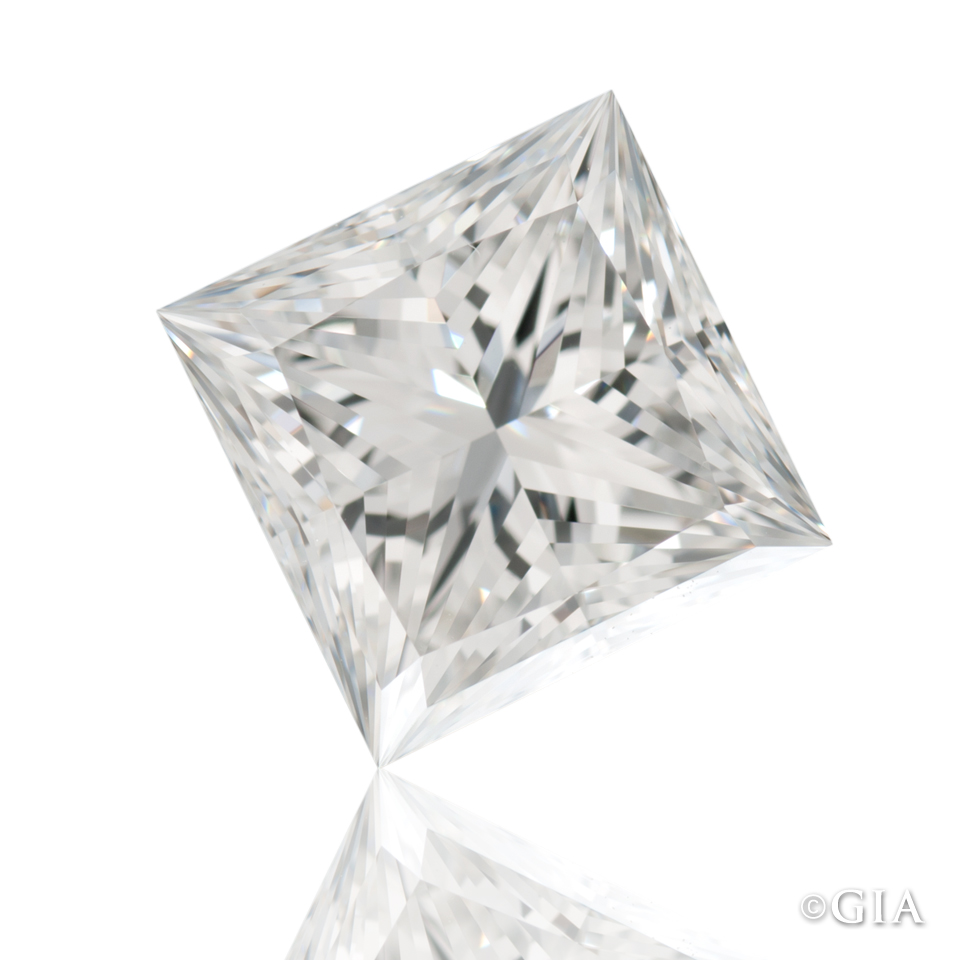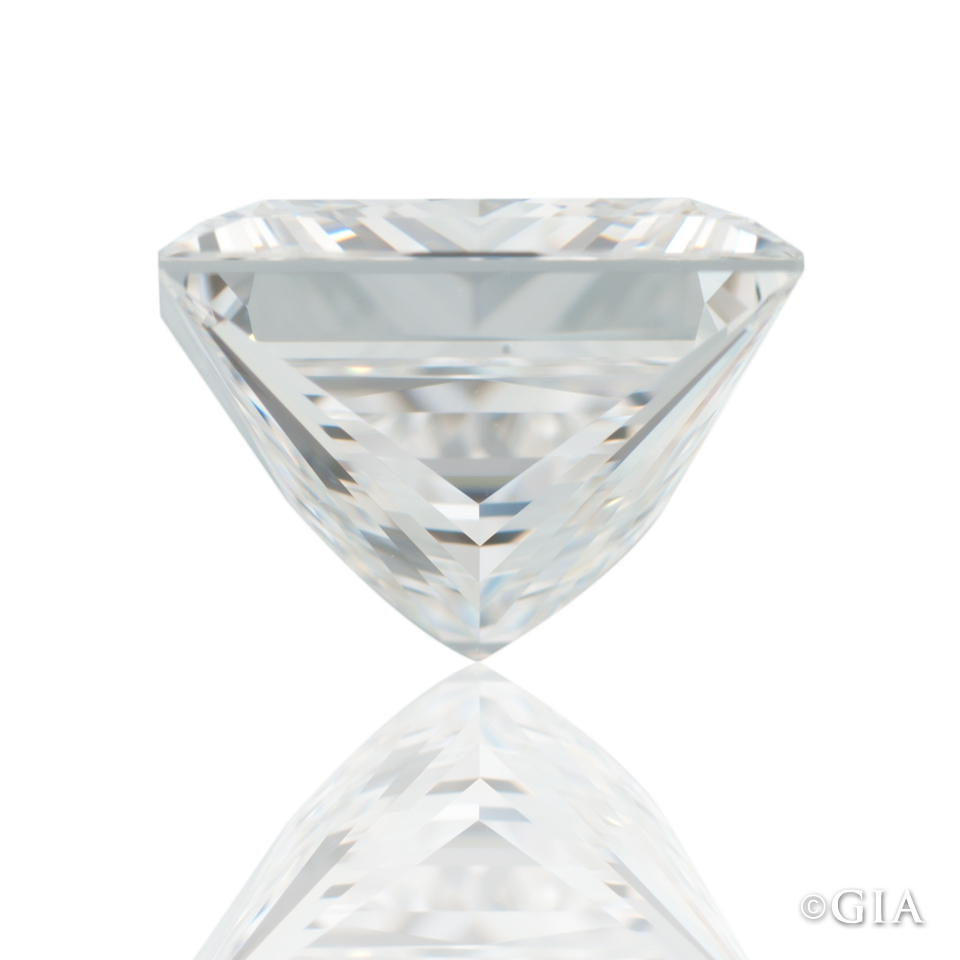If you’re searching for a diamond that has a lot of brightness and is somewhat less conventional than the standard round brilliant, a princess cut diamond might be perfect for you.
What is a princess cut diamond?
A relative newcomer to the diamond universe, the princess cut was created in 1981 by Betzalel Ambar and Israel Itskowitz. GIA grading reports describe princess cut diamonds as square modified brilliants, distinguishing them from the step cut facet arrangements you find on other square diamonds like the Asscher cut. A princess cut diamond can also be rectangular or tapered. The princess cut is like an upside-down pyramid, with much of its weight in the pavilion, so the face-up appearance of the finished diamond may appear smaller than another diamond of a different shape but of similar carat weight. The number of facets and the faceting arrangement on the pavilion and crown can vary widely, creating a wide variety in scintillation, the combination of how much it sparkles and the pattern of the sparkle.

Princess cut diamonds can be striking center stones in engagement rings. They are attractive alternatives to the standard round brilliant. Photo by Robert Weldon/GIA.
Why is the princess cut diamond so popular?
In a display case full of round brilliants and emerald cut diamonds, the princess cut can stand out as something different…beautiful…unusual. Brides-to-be seeking the non-traditional are often wooed by this shape and cutting style, and clever marketing also helps spur sales.
What to look for in princess cut diamonds
- Shape: A square princess cut has a length-to-width ratio not exceeding 1:05:1. Princess cuts that have uneven sides or unequal proportions are less attractive.
- Symmetry: The symmetry of the facets helps to create the beauty of the cut. You can look for this by drawing an imaginary line down the length of the diamond, and seeing if the facets on the right and left halves are the same shape and size. Also look for all the points of the facets to meet and that there are no missing or extra facets. Then draw an imaginary horizontal line across the diamond, and see if the facets on the bottom and top halves are symmetrical. The more symmetrical the facets, the more desirable the diamond.
- Scintillation: A balanced contrast of light and dark patterns in the table and facets are important. A stone that is either too light or too dark is typically not as attractive as one that has a pleasing balance.
- Avoid pavilion bulge: From the side, look at the diamond through a 10x loupe. The pavilion should slope gently from the girdle to the culet. If the slope is steep, it can create a pavilionbulge, making the stone look dark and adding extra weight
- Don’t expect to see a culet, the small horizontal facet on the point of the pavilion, as you would in a standard round brilliant cut diamond. The lack of a culet means that the pavilion point is susceptible to chipping – which can be avoided with the proper setting.
What are popular setting styles for a princess cut diamond?
Princess cuts are often mounted as solitaires in four-prong settings, but bezel settings are also popular. Either of these setting styles will help protect the corners from chipping.
What side stones complement a princess cut diamond?
Triangles, trilliants, baguettes, and tapered baguettes used as side stones can enhance the beauty of a princess cut.

The balance of light and dark areas in this diamond is not as symmetrical as the one above it, but beauty is ultimately subjective. Photo by Robert Weldon/GIA.
Ingenious faceting can bring excitement to a diamond. Such is the case with the princess cut. And that means you have another beautiful option to put on your finger.

Corners on princess cut diamonds can fracture as seen in this image. Well-placed prongs can protect them.
Want to know more about diamond cuts? Be sure you know the basics about a diamond’s anatomy: facet, table, girdle, pavilion, and culet – and the impact these have on a diamond’s interplay with light.
Custom Field: Array


